Elementary School Adopts New STEM Curriculum, Brings Engineering to Elementary Classrooms
As an academic subject, engineering has traditionally been reserved for college students. But local students as young as kindergarten to grade 5 will be tackling engineering challenges as part of their classroom activities this year. Mrs. Debbie Hamburg, Elementary School Principal, announced that Hebrew Academy has adopted the award-winning curriculum “Engineering is Elementary®” (EiE®), a project of the National Center of Technological Literacy® (NCTL®) at the Museum of Science, Boston.
New research shows instruction in engineering enhances the way students learn science—as well as math and other subjects. And the new Next Generation Science Standards, released in April 2013, recommend that engineering instruction should start in the elementary grades. The nation’s largest elementary engineering curriculum, EiE has been used by an estimated 4.5 million children in all 50 states. The project-based, hands-on lessons are introduced by a set of storybooks that present kids from a variety of cultures and backgrounds who face real-world engineering challenges. After reading the stories, elementary students roll up their sleeves to test their own problem-solving skills, designing items like bridges, parachutes, hand pollinators, plant packages, and simple machines while working in teams, as real engineers do.
The staff participated in training from the EIE specialist in November. Our school STEAM coordinator, Mrs. Genie Bensimon, meets with the General Studies staff to help incorporate this curriculum into the Science, Technology, Engineering, Art and Math curriculum.
“We must introduce children as early as possible to the engineering design skills that will spark them to use science and math to solve real problems,” says Yannis Miaoulis,
Museum of Science president and director. “Engineering can bring science alive, make it relevant, and spark future innovators.”
He launched the NCTL to integrate engineering into museums and schools nationwide through advocacy, creating educational products, and offering educators professional development. The Museum of Science is the only science museum in the country with a comprehensive strategy and infrastructure to foster technological literacy in both science museums and schools nationwide. A hands-on, inquiry-based program developed with support from the National Science
Foundation (NSF), major corporations, and foundations, EiE was one of the first programs chosen by Change the Equation as part of President Obama’s “Educate to Innovate” campaign to improve STEM education. The classroom tested 20-unit curriculum meets both state and federal academic standards.
“Children are born engineers,” says EiE founder and director Christine Cunningham, a Museum vice president. “They love to build things and see how they work. With the release of the Next Generation Science Standards in 2013, there’s an expectation that engineering will be integrated with existing elementary science curricula – and schools and districts need an effective way to do that. We designed EiE to help teachers connect the dots between this natural passion for engineering and traditional science and math education.”
About the Museum of Science, Boston:
One of the world’s largest science centers and New England’s most attended cultural institution, the Museum introduces about 1.5 million visitors a year to science, technology, engineering, and math (STEM) via dynamic programs and hundreds of interactive exhibits. Founded in 1830, the Museum was first to embrace all the sciences under one roof. Highlights include the Hall of Human Life, Thomson Theater of Electricity, Charles Hayden Planetarium, Mugar Omni Theater, Gordon Current Science & Technology Center, 4-D Theater (in summer 2014) and Butterfly Garden. Reaching over 20,000 teens a year worldwide via the Intel Computer Clubhouse Network, the Museum also leads a 10-year, $41 million National Science Foundation-funded Nanoscale Informal Science Education Network of science museums. Its National Center for Technological Literacy®’s engineering curricula have reached an estimated 70,600 teachers and 5.3 million students nationwide. Visit: http://www.mos.org. For NCTL: http://www.mos.org/nctl. For Engineering is Elementary: http:// www.eie.org.

